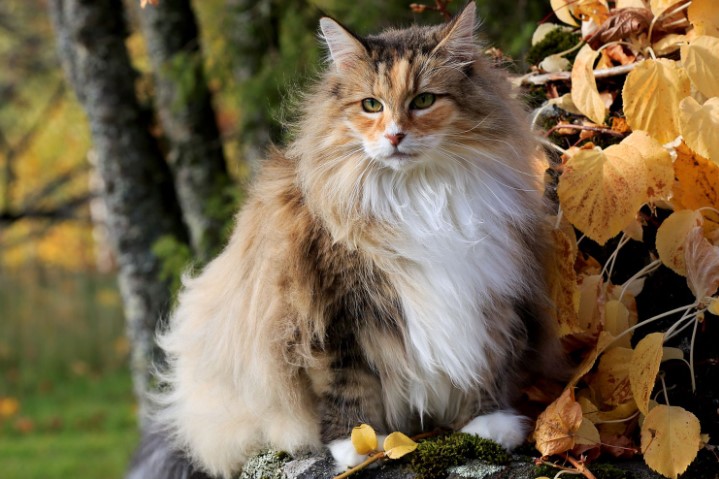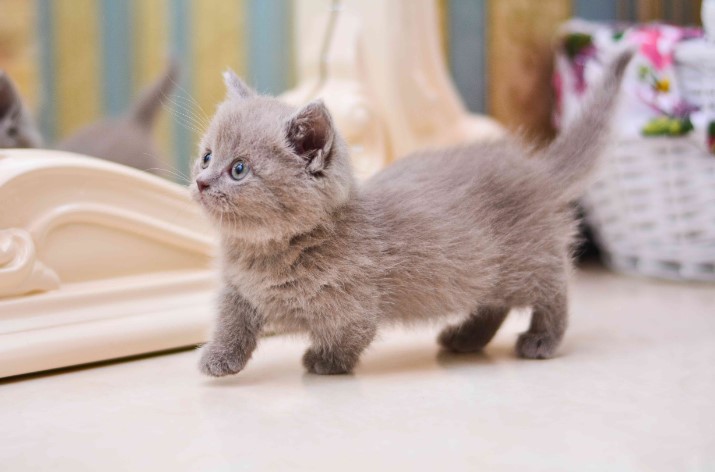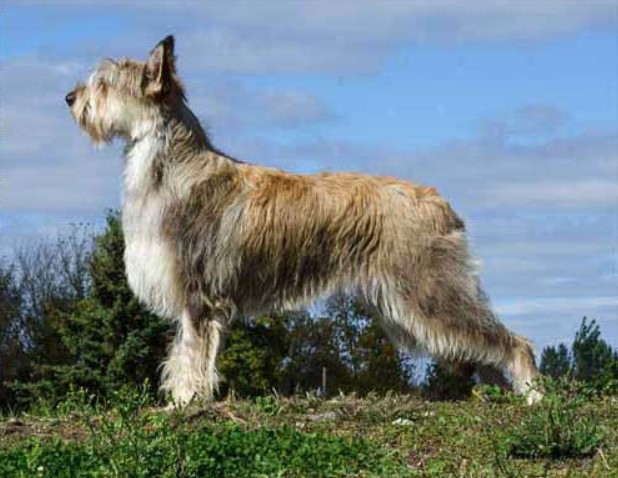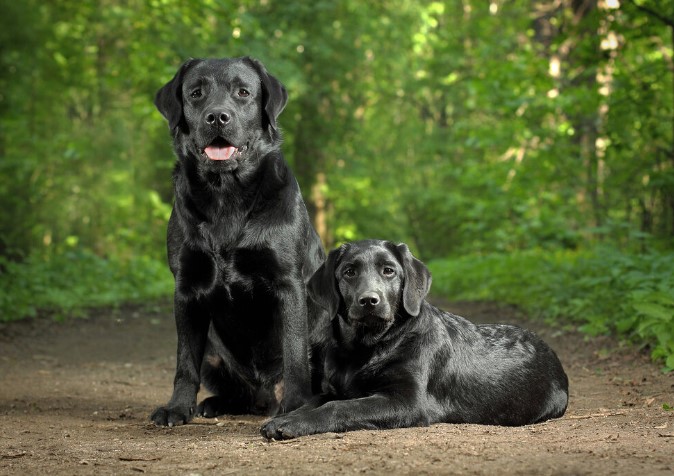
Norwegian Forest Cat Breed
Introduction to the Norwegian Forest Cat
The Norwegian Forest Cat, often affectionately called “Wegie,” is a majestic breed known for its thick, water-repellent coat and striking looks. These cats have a rich history that dates back to the cold forests of Norway, where they were well-adapted to survive harsh winters. Let’s dive into the fascinating world of the Norwegian Forest Cat, exploring everything from their physical characteristics to their personality and care needs.
Physical Characteristics
Size and Weight
Norwegian Forest Cats are a large and sturdy breed. Males typically weigh between 12 to 16 pounds, while females are slightly lighter, ranging from 9 to 12 pounds. Their robust build is complemented by powerful muscles, making them agile climbers and hunters.
Coat and Color
One of the most striking features of the Norwegian Forest Cat is its luxurious double coat. The outer layer is long, glossy, and water-resistant, protecting them from the elements, while the undercoat is dense and woolly, providing warmth. They come in a variety of colors and patterns, including white, black, red, blue, and cream, often with tabby, tortoiseshell, or bi-color markings.
Distinctive Features
These cats have several distinctive features that set them apart. Their large, almond-shaped eyes can range from green to gold, and their expressive faces are framed by a bushy mane, giving them a lion-like appearance. They also have tufted ears and a long, bushy tail that helps them balance as they navigate their environment.
Personality and Temperament
General Temperament
Norwegian Forest Cats are known for their friendly and gentle nature. They are typically calm and laid-back, making them excellent companions for families and individuals alike. Despite their wild appearance, they are very affectionate and enjoy spending time with their human companions.
Interaction with Humans
These cats form strong bonds with their owners and are known for their loyalty. They often follow their people around the house, curious about their activities. While they enjoy cuddling, they also appreciate their independence and may not always seek constant attention.
Interaction with Other Pets
Norwegian Forest Cats are generally sociable with other pets, including dogs and other cats. They have a playful side and can often be found engaging in games and interactive play with their furry housemates.
Care and Maintenance
Grooming Needs
Due to their thick double coat, Norwegian Forest Cats require regular grooming to prevent matting and reduce shedding. Brushing them a couple of times a week is usually sufficient, but during shedding seasons, more frequent grooming may be necessary.
Dietary Requirements
These cats benefit from a high-protein diet that supports their muscular build and active lifestyle. It’s essential to provide them with high-quality cat food, and occasionally, incorporating wet food can help keep them hydrated and support their overall health.
Health Concerns
While generally a healthy breed, Norwegian Forest Cats can be prone to certain genetic conditions such as hypertrophic cardiomyopathy (a form of heart disease) and glycogen storage disease type IV. Regular veterinary check-ups and a balanced diet can help manage and prevent health issues.
Living Environment
Indoor vs. Outdoor Living
Norwegian Forest Cats are adaptable and can live both indoors and outdoors. However, due to the potential risks of outdoor environments, many owners prefer to keep them indoors or provide a safe, enclosed outdoor space where they can explore without danger.
Ideal Home Setup
These cats appreciate having vertical space to climb and perch, such as cat trees or shelves. They also enjoy having cozy spots to nap and a variety of toys to keep them entertained.
Adaptability to Different Climates
Thanks to their thick coats, Norwegian Forest Cats are well-suited to cold climates. However, they can adapt to warmer environments as long as they have access to cool, shaded areas and plenty of water.
Training and Socialization
Basic Training Tips
Training a Norwegian Forest Cat can be a rewarding experience. These intelligent cats respond well to positive reinforcement techniques, such as treats and praise. Teaching them basic commands like “sit” and “stay” can help strengthen your bond and provide mental stimulation.
Socialization with People
Early socialization is crucial for Norwegian Forest Cats to develop into well-adjusted adults. Exposing them to different people, sounds, and environments from a young age can help them become more confident and less fearful of new situations.
Socialization with Other Animals
Introducing a Norwegian Forest Cat to other pets should be done gradually and under supervision. Slow introductions can help prevent any potential conflicts and allow the animals to become comfortable with each other.
Norwegian Forest Cat in Popular Culture
Appearances in Media
The Norwegian Forest Cat has made its mark in popular culture, often appearing in literature, films, and even mythology. Their regal appearance and intriguing history make them a favorite subject in various media forms.
Famous Norwegian Forest Cats
Some Norwegian Forest Cats have gained fame on social media platforms, amassing large followings due to their striking looks and charming personalities. These feline celebrities often share their daily lives, captivating audiences worldwide.
Adoption and Purchasing
Finding a Reputable Breeder
If you’re considering adding a Norwegian Forest Cat to your family, it’s essential to find a reputable breeder who prioritizes the health and well-being of their cats. Look for breeders who provide health guarantees and have a history of ethical breeding practices.
Adoption from Shelters
Adopting from a shelter or rescue organization is another excellent option. Many Norwegian Forest Cats and mixed breeds are in need of loving homes, and adopting can be a rewarding experience.
Cost Considerations
The cost of a Norwegian Forest Cat can vary significantly depending on factors such as pedigree, breeder reputation, and location. It’s important to consider the long-term costs of pet ownership, including food, grooming, veterinary care, and other supplies.
Common Myths and Misconceptions
Myth vs. Reality
There are several myths surrounding Norwegian Forest Cats, such as the belief that they are completely hypoallergenic. While they may produce fewer allergens than some other breeds, no cat is entirely hypoallergenic.
Addressing Common Questions
Addressing common questions and misconceptions about the breed can help potential owners make informed decisions. For example, some people may believe that Norwegian Forest Cats are overly aggressive or difficult to train, which is not typically the case.
Comparisons with Other Breeds
Maine Coon
The Maine Coon is often compared to the Norwegian Forest Cat due to their similar size and appearance. However, while both breeds are friendly and sociable, Maine Coons are generally more outgoing and playful.
Siberian Cat
Like the Norwegian Forest Cat, the Siberian Cat is known for its thick coat and strong build. Both breeds are well-suited to cold climates, but Siberian Cats tend to be more affectionate and people-oriented.
Other Long-Haired Breeds
When comparing Norwegian Forest Cats to other long-haired breeds, it’s important to consider factors such as grooming needs, personality, and health concerns. Each breed has unique characteristics that may appeal to different types of cat owners.
Activities and Enrichment
Toys and Playtime
Norwegian Forest Cats are playful and enjoy a variety of toys, from interactive puzzles to simple feather wands. Providing them with stimulating toys can help keep them mentally and physically engaged.
Environmental Enrichment
Environmental enrichment is crucial for the well-being of Norwegian Forest Cats. This can include providing climbing structures, scratching posts, and safe outdoor enclosures where they can explore and satisfy their natural instincts.
Physical Exercise
Regular physical exercise is important for maintaining the health and happiness of Norwegian Forest Cats. Engaging them in daily play sessions can help prevent obesity and provide an outlet for their energy.
Health and Longevity
Common Health Issues
While Norwegian Forest Cats are generally healthy, they can be prone to certain health issues, such as hypertrophic cardiomyopathy and hip dysplasia. Regular veterinary check-ups and a healthy lifestyle can help manage these risks.
Lifespan Expectations
The average lifespan of a Norwegian Forest Cat is around 14 to 16 years, although with proper care, some may live even longer. Ensuring they receive regular veterinary care, a balanced diet, and plenty of exercise can contribute to a long, healthy life.
Tips for a Healthy Life
To keep your Norwegian Forest Cat healthy, provide a nutritious diet, regular exercise, and routine veterinary care. Additionally, maintaining a stress-free environment and offering mental stimulation can enhance their overall well-being.
Breeding and Genetics
Breeding Practices
Responsible breeding practices are essential for maintaining the health and genetic diversity of the Norwegian Forest Cat breed. Ethical breeders prioritize the well-being of their cats and work to reduce the risk of genetic disorders.
Genetic Diversity
Genetic diversity is important for the long-term health of the breed. It helps reduce the risk of inherited diseases and contributes to the overall robustness of the population.
Ethical Breeding
Ethical breeding involves careful selection of breeding pairs, regular health screenings, and a commitment to the welfare of the cats. By supporting ethical breeders, you help promote the health and sustainability of the breed.
Community and Resources
Breed Clubs and Organizations
There are several breed clubs and organizations dedicated to the Norwegian Forest Cat. These groups provide valuable resources, support, and opportunities for networking with other enthusiasts.
Online Resources and Forums
Online resources and forums can be excellent places to learn more about the Norwegian Forest Cat. These platforms offer advice, share experiences, and connect you with a community of fellow cat lovers.
Local Meetups and Events
Participating in local meetups and events can be a great way to meet other Norwegian Forest Cat owners and enthusiasts. These gatherings often feature educational sessions, breed showcases, and opportunities to socialize with other cat lovers.
Conclusion
In conclusion, the Norwegian Forest Cat is a remarkable breed with a rich history and a unique set of characteristics. From their stunning appearance to their friendly and gentle nature, they make wonderful companions for a variety of households. Whether you’re considering adopting a Norwegian Forest Cat or simply want to learn more about this fascinating breed, understanding their needs and traits can help ensure a happy and fulfilling relationship.
FAQs
What is the lifespan of a Norwegian Forest Cat?
Norwegian Forest Cats typically live between 14 to 16 years, though with proper care, some may live even longer.
Are Norwegian Forest Cats hypoallergenic?
While they may produce fewer allergens than some other breeds, no cat is entirely hypoallergenic.
How much exercise does a Norwegian Forest Cat need?
Norwegian Forest Cats are active and enjoy regular playtime and physical exercise to keep them healthy and engaged.
What should I feed my Norwegian Forest Cat?
A high-protein diet with high-quality cat food is recommended. Including wet food can also help keep them hydrated and support overall health.
Can Norwegian Forest Cats be left alone for long periods?
While they enjoy companionship, Norwegian Forest Cats can be independent. However, it’s best not to leave them alone for extended periods to prevent loneliness and boredom.

Munchkin Cat Breed

Berger Picard Dog Breed
You May Also Like

From Pup to Pal: Nurturing Your Black Labrador’s Development
September 5, 2024
Essential Puppy Supplies – Must-Haves for New Pet Parents
October 4, 2023